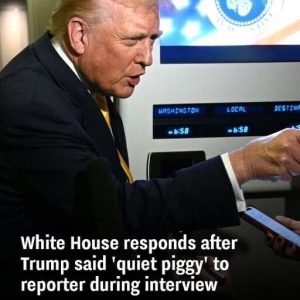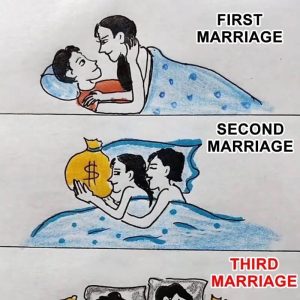The unfolding case centers on an indictment that presents a far-reaching and intricately detailed criminal conspiracy involving the misuse of pandemic-era federal funds, political financing violations, and financial misconduct that allegedly reached the highest levels of a congressional campaign. According to the narrative laid out by prosecutors, funds originally allocated for COVID-19 response contracts were diverted through a sophisticated web of transfers designed to obscure their origin and ultimate purpose. These contracts, intended to support communities during a time of crisis, became the foundation of an allegedly elaborate scheme in which overpayments from FEMA were funneled through various accounts before being repurposed as political donations. The mechanism reportedly included the use of straw donors—individuals who were reimbursed for contributions made in their own names to create the illusion of grassroots political support. Alongside these allegations were claims of falsified tax filings meant to conceal the movement and nature of the funds. This initial layer of the scandal revealed a troubling intersection of public health funding and political ambition, raising immediate concerns about accountability, misuse of crisis resources, and the manipulation of campaign finance regulations.
Even before the indictment, the congresswoman at the center of the allegations had been the subject of mounting public scrutiny due to a dramatic and unexplained surge in her personal income. The increase—more than $6 million in a single year, tied directly to her family-operated business, Trinity Healthcare Services—raised red flags among ethics officials, journalists, and political observers. That spike triggered a separate investigation into whether her financial disclosures accurately reflected her earnings and the sources of her wealth. State agencies had already demanded repayment of certain funds associated with Trinity, citing concerns about billing practices and contractual compliance. Each new revelation compounded the pressure surrounding her public office, creating an atmosphere of suspicion and a perception that her financial activities were deeply intertwined with her political rise. The indictment, therefore, did not emerge in a vacuum but rather escalated an ongoing controversy, transforming a cloud of ethical questions into a formal array of criminal charges. With state and federal inquiries converging, the situation evolved into one of the most significant financial and political scandals involving a sitting member of Congress in recent years.
As prosecutors detailed the alleged movement of funds, the indictment painted a portrait of deliberate planning and systematic concealment. The routing of FEMA overpayments through multiple accounts suggested an attempt to obscure financial trails, complicate oversight, and convert government dollars into political capital. Straw-donor operations, long recognized as a hallmark of illicit campaign finance efforts, were described as a method used to inflate the appearance of public support and circumvent legal contribution limits. Falsified tax filings allegedly served to legitimize these transactions on paper while shielding their true nature from authorities. Each component reflected not merely isolated missteps but a concerted strategy to manipulate financial systems for political gain. The scale of the scheme, as described, placed the case among the largest and most complex political finance investigations of the decade. It also illuminated how emergency funding—even in a period of national crisis—can be exploited when oversight mechanisms are overwhelmed or when individuals in positions of authority leverage their access for personal or campaign-related advantage. These allegations revealed systemic vulnerabilities in the distribution of pandemic relief funds and highlighted how political campaigns can be susceptible to backdoor financial influence.
As news of the indictment spread, it sent a shockwave through Florida’s political landscape. The congresswoman, once seen as a rising figure, suddenly found herself at the center of a national controversy, and the outcry was not limited to partisan divides. Bipartisan scrutiny intensified rapidly as lawmakers, political activists, and constituents grappled with the gravity of the allegations. Critics from both major parties emphasized the seriousness of the charges, arguing that they undermined public trust and tarnished the reputation of the district she represented. Opponents labeled the indictment “a sad moment” for the community, arguing that voters deserved leadership unencumbered by legal battles or corruption scandals. The scandal reached beyond local political rivalries, reshaping strategic calculations for upcoming elections, fundraising efforts, and party messaging. Political operatives began debating whether the fallout could shift voter behavior, depress turnout, or catalyze demands for new representation. The allegations appeared poised to influence future primaries, policy conversations, and long-term political alignments, embedding the scandal within broader debates about ethics, governance, and transparency.
Against this politically charged backdrop, the stakes of the legal process became even clearer when the Justice Department announced the potential consequences: up to 53 years in prison for the congresswoman and up to 35 years for her brother. These maximum penalties underscored the seriousness of the charges and signaled that the government viewed the alleged actions as especially egregious due to their scale, intent, and impact on public institutions. Criminal cases involving political finance violations often carry significant penalties, but the combination of fraud, misuse of federal relief funds, and tax-related offenses elevated this case to a particularly severe category. The public learned that the indictment was not merely symbolic or political but carried the weight of decades of potential imprisonment. As legal proceedings advanced, both prosecutors and defense attorneys prepared for a long and complex battle likely to involve extensive financial records, witness testimony, expert analysis, and disputes over intent. The looming threat of such high-stakes sentencing raised broader questions about plea deals, cooperation agreements, and whether additional individuals or entities might be implicated as investigations deepened.
As the scandal continued to unfold, its implications extended far beyond the courtroom. The case became emblematic of a larger national concern: the vulnerability of emergency funding programs and election finance systems to corruption. Political observers began framing the controversy as one of the most high-profile corruption cases in recent American politics, not only because of the specific allegations but because of its timing in the aftermath of a global crisis that had already strained public resources and trust. The situation forced conversations about oversight, accountability, and the ethical obligations of elected officials, particularly those who ascend to office during times of upheaval. Within Florida’s 20th Congressional District, the case introduced profound uncertainty about the future of representation, policy priorities, and political direction. Constituents faced the possibility that their elected leader might be removed, replaced, or sidelined by ongoing legal battles. Campaigns began recalibrating their strategies, community leaders voiced concerns about reputational harm, and political organizations prepared for a potentially transformative shift in leadership. As more details emerged and the legal fight intensified, the scandal came to symbolize both the fragility and importance of ethical governance—marking a turning point that could permanently reshape the district’s political identity and influence national conversations about corruption, crisis funding, and public trust.




